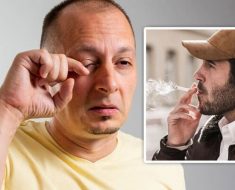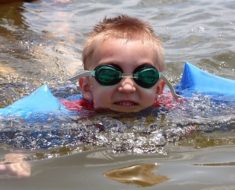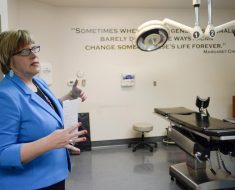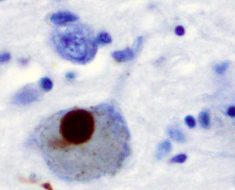It was back to the drawing board for bioresorbable vascular scaffolds (BVS), to some degree, after the initially promising ABSORB series of trials dampened any enthusiasm for the coronary stent-like devices designed to dissolve over time.
A second act for BVS technology could be in the cards, some believed, with improvements in scaffold design and materials. Such advances might theoretically include struts of a thickness that more rival the much slimmer struts of successful drug-eluting stents (DES).
Now, a “thinner-strut” sirolimus-eluting BVS has emerged as noninferior to a mainstay everolimus-based metal DES by intravascular imaging at 1 year in a randomized trial that was limited to de novo, ischemia-associated “noncomplex” target coronary lesions.
The novel scaffold was comparable to the Xience (Abbott Vascular) DES for surrogate endpoints like luminal late loss and periprocedural complications in FUTURE-II, a 433-patient pivotal trial conducted at 28 sites that was designed for review by Chinese regulators.
The Firesorb (MicroPort Medical), described as a bioresorbable scaffold (BRS), appeared to rival or surpass Xience at 1 year for some markers of optimal deployment determined by optical coherence tomography (OCT) after the procedure and at 1 year, observed Xu Bo, MBBS, National Clinical Research Center for Cardiovascular Diseases, Beijing.
The trial “proved the midterm safety and efficacy” of the Firesorb BRS and represents an “opportunity for a comeback” for BVS “with improved physical and mechanical properties,” Xu said when reporting the trial May 19 during the virtual Congress of European Association of Percutaneous Cardiovascular Interventions (EuroPCR 2021).
The trial’s OCT substudy of 80 patients showed the BRS with a greater extent of neointimal coverage and less incomplete apposition and luminal protrusion, “indicating a better structural integrity and scaffold-vessel interaction,” notes the full FUTURE-II report, published the same day in JACC: Cardiovascular Interventions.
“Our findings are partly explained by the thinner-strut design and lower strut protrusion that may attenuate turbulent flow and facilitate reendothelialization,” write the authors, led by Song Lei, MD, Chinese Academy of Medical Sciences, Beijing.
“By all measures, this was a smashing success,” Alexandra Lansky, MD, Yale New Haven Health, Connecticut, said as a panelist after the Xu presentation. “I hope this is going to be the revival of BRS and we’ll be looking back to this session here today to say this was the new beginning.”
Interest in initially promising coronary BVS dropped off considerably after the everolimus-eluting Absorb (Abbott Vascular) failed to gain advantages over Xience in the ABSORB series of trials and ultimately showed untoward risks for in-scaffold thrombosis and target-lesion failure (TLF).
It is “definitely premature to suggest that BVS are making a comeback based on this trial alone,” David E. Kandzari, MD, Piedmont Heart Institute, Atlanta, told theheart.org | Medscape Cardiology.
Firesorb struts are substantially thinner than those of earlier-generation BVS, he agreed. But importantly, they are “considerably thicker than best-in-class contemporary drug-eluting stents, which now can approach 60 microns in metallic strut thickness.”
The novel BRS, made largely of bioresorbable poly-L-lactic acid (PLLA), like the Absorb BVS before it, comes in several diameter sizes, with strut thicknesses of either 100 μm or 125 μm. Absorb struts measured at 156 μm.
The FUTURE-II authors based their case for the device in part on the idea that the Absorb’s downfall was related to its scaffold thickness, Kandzari noted. “Although this is very plausible, we don’t have any evidence that it’s the singular factor that led to the clinical failure” of BVS. The contributing role of strut thickness or any of a number of other possible causes “is still very speculative.”
Also, he observed, FUTURE-II entered only patients with unchallenging lesions, and its statistical power was limited to angiographic endpoints. “One might describe this as a phase 2 clinical trial.”
Late lumen loss at 1 year, the trial’s primary endpoint, averaged 0.17 mm for the 215 patients who received Firesorb and 0.18 mm for the 218 assigned to Xience in the intention-to-treat analysis. A per-protocol analysis of 370 patients yielded nearly identical results: 0.17 mm and 0.19 mm for Firesorb and Xience, respectively. Both analyses were significant for noninferiority, at P < .0001.
The proportion of struts covered by neointima by OCT at 1 year, the main secondary endpoint, was about 99% in both groups, with a separation between the two of only 0.8 of a percentage point (P < .0001 for noninferiority).
The rate of TLF was 0.9% for Firesorb and 1.9% for Xience (P = .43).
FUTURE-II was “extremely well conducted” despite its challenges as the first randomized BVS trial after the technology’s “long and protracted demise,” Lansky said. “I don’t think that’s an easy task, to be the first one out the gate after a failed program.”
Indeed, it took 2 years to meet the trial’s enrollment goal because physicians were reluctant to refer their patients, Xu explained. “Even some of my physician colleagues were not so confident at the beginning of this study.”
Substantially more progress in BVS will be necessary before clinicians, industry, and regulators can “climb out of the trough of disillusionment” into which they were thrown by the technology’s failures in multiple clinical trials, Kandzari said.
“Noninferiority is a difficult standard to accept alone without at least some other supportive evidence that would suggest some superior advantage,” he said. Much larger and longer randomized trials showing favorable outcomes for clinical endpoints would be preferable.
“But if we do end up revisiting this space and we do perform noninferiority trials,” Kandzari said, “we will be expecting some other endpoints that will demonstrate a measurable advantage for scaffolding over what we have today.”
FUTURE-II was sponsored by MicroPort Medical, of which at least one coauthor is an employee. The other authors, including Xu and Song, report no relevant conflicts of interest. Lansky has served as an investigator in MicroPort-sponsored trials and has reported receiving research grants from Sinomed, MicroPort, Abiomed, and Boston Scientific; and has received speaker or consulting fees from Sinomed, Microport, Astra Zeneca, and Medtronic. Kandzari has reported receiving research grants from Biotronik, Boston Scientific, Medinol, Medtronic, Orbus Neich, and Teleflex; and consulting for Biotronik, Cardiovascular Systems, and Medtronic.
JACC Cardiovasc Interv. Published online May 19, 2021. Abstract
Congress of the European Association of Percutaneous Cardiovascular Interventions (EuroPCR) 2021. Presented May 19, 2021.
Follow Steve Stiles on Twitter: @SteveStiles2. For more from theheart.org | Medscape Cardiology, follow us on Twitter and Facebook.
Source: Read Full Article





